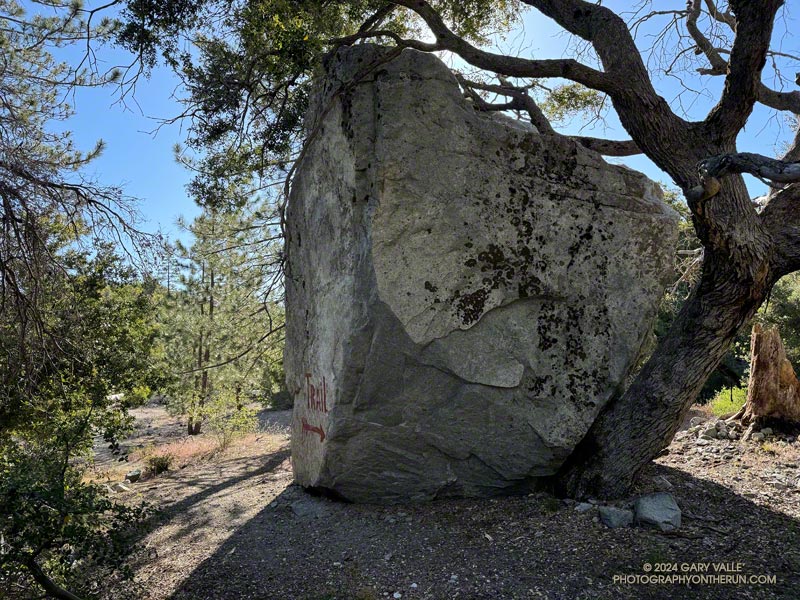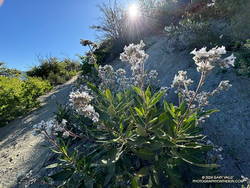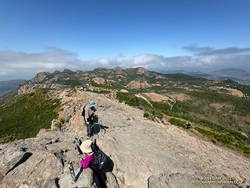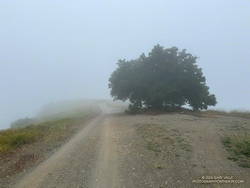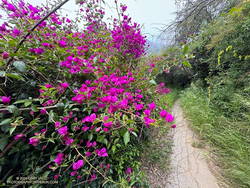
In my experience, there are several things you can count on when running in a KHRaces event — a challenging, well-marked course, well-placed and supplied aid stations with helpful volunteers, reliable timing, good food at the finish line, and plenty of portable toilets at the start. That was certainly the case for the 2024 Malibu Canyon Trail Races in Point Mugu State Park.
The 100K, 50M, 50K, and 30K courses used many of the same trails as those in the Ray Miller Trail Races — including the hallmark start and finish on the Ray Miller Trail. The courses were out and back — which means you get to say hi to everyone in your race and be astonished by the speed of the faster runners.
Cloudy, Cool and Humid Weather

Ten days before the race computer weather models were predicting the possibility of hot weather, but as race day approached the marine layer prevailed, and on June 8th the weather — though a little humid — was cool and cloudy throughout the day. Here are temps and other data on race day from an SCE weather station near the 50K turnaround near the Danielson Multi-Use area.
A few hours into the race, some runners looked like they had been in a rainstorm. For once, I was well-hydrated at the end of a race!
Water Crossings and Wildflowers
The wettest back-to-back rain years (measured at Los Angeles) in 100+ years had a tangible effect on the race, resulting in numerous get-your-feet-wet creek crossings and stunning displays of wildflowers.
Some runners were determined to keep their shoes dry, but most got their feet wet at least a couple of times. Having run with wet shoes most of the Winter, I surrendered to having wet socks and shoes early in the race. Just about every time my socks and shoes started to feel somewhat dry, another crossing would soak them.
I lost count of the stream crossings on the 50K course, but using Google Earth imagery from May 2023, it looks like there were around 12 (times two) crossings in Sycamore Canyon, plus a few more in Wood Canyon.
My hands were wet most of the race and the only wildflower photo I took was of a striking yellow mariposa lily along the Guadalasca Trail. During a training run on the course in May, I took this photo of wildflowers along the Wood Canyon Vista Trail (Backbone Trail). That was a sunny day!
Fantastic Volunteers
In many ways, volunteers make the race, assisting and encouraging runners in any way they can.
Phenomenal Performances
With the cool weather, there were some very fast times. Scott Traer crushed the 50M in 7:07:43, and Osvaldo Cerda flew through the 50K in 3:52:17! Paul Sinclair successfully defended last year’s first-place finish in the 100K with a time of 10:22:31. In the 100K, Angela Avina was the top woman and placed third overall with a time of 11:08:20. Zac Campbell and Jess Illg were the top man and woman in the 30K.
Wrap-up
My run went about as well as any 50K I’ve done. I had no issues during the race and felt good at the finish line and afterward.
Runners don’t expect a course to be exactly 50K — 31.1 miles — and the distance varies from race to race. The longest “50K” I’ve run was nearly 35 miles long and the shortest about 29 miles. My track for this race was just over 32 miles.
Here is an interactive, 3-D terrain view of my GPS track from the Malibu Canyon 50k. The initial view is zoomed in on the Guadalasca section of the course, but the view is easily changed using the control on the upper right.
All the results can be found on Ultrasignup. PAKSIT PHOTOS did a fantastic job covering the race. Their photos can be found here.
Many thanks to Keira Henninger and KHRaces, all the runners, and especially the volunteers for an excellent race!


